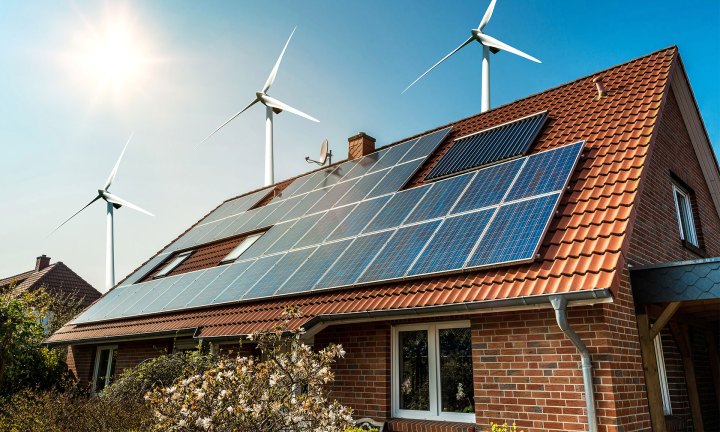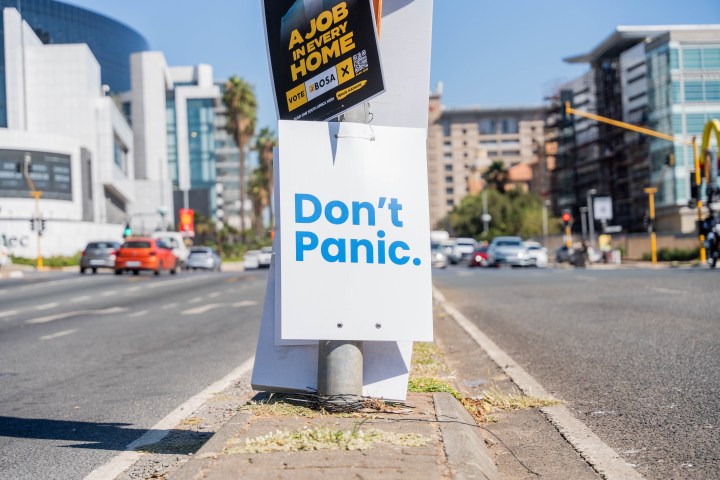SPONSORED CONTENT
Escalating load shedding and solar incentives announced, now what?

If the reaction to President Ramaphosa’s recent State of the Nation Address (SONA) is anything to go by, then it’s clear that South Africans have finally realised that load shedding isn’t going away anytime soon. In fact, it’s more likely to get worse in the short to medium term.
As well-intentioned as they might be, implementing measures like Ministers of Electricity and states of disaster are unlikely to meaningfully shift the needle away from load shedding over the next three years.
Having reached that point of acceptance, we can start asking the important question: now what? What action should we all be taking as South Africans to ensure that load shedding doesn’t affect our ability to live, work, and do business?
The answer, for now at least, lies in taking matters into our own hands and powering our own homes and businesses wherever possible, with rooftop solar being the easiest way of doing so.
Thankfully the solar incentives announced in the recent Budget Speech will go a long way to assisting home and business owners to take care of their own energy needs, and potentially provide power for the rest of Mzansi as well.
Click here to generate your custom solar proposal in 3 mins with easy access to finance.
The substance of SONA
Before digging into why taking the rooftop solar option is such an important step and how you can ensure that you’re able to do so, it’s worth digging into why some of the proposed steps put forward by the president aren’t likely to bring an end to, or even reduce, load shedding.
Let’s start with what’s perhaps the most contentious announcement made during the address: entering into a national state of disaster. Outside of the concerns expressed by many that the energy crisis state of disaster will mirror the corruption and arbitrary rules of the COVID-19 state of disaster, my biggest concern is that it won’t do much in terms of actually bringing new generation capacity onto the grid, which is what’s primarily needed in order to meet our electricity demand.
And while a dedicated Minister of Electricity might seem important in the face of the crisis, it’s still not entirely clear how this as-yet-unnamed minister will take control of the situation. The fact that the President felt it was necessary to create this position also underlines how divided the current cabinet is when it comes to addressing the electricity crisis.
The one positive to come from the address is that residences and businesses are being incentivised through tax incentives to get solar. It is, after all, one of the quickest ways to get power onto the grid simply by making it more affordable. You only have to look at the recent example of Vietnam, which added more than 9GW of rooftop solar in 2020 alone. By way of comparison that is equal to 9 stages of daytime load-shedding and more than the combined output of Medupi and Kusile power stations, once they’re completed (and they won’t be for some time).
Click here to generate your custom solar proposal in 3 mins with easy access to finance.
A brief look at how bad load shedding has become
Looking at the state of load-shedding in Feb 2023, the escalation has become eye watering. To begin with, between last year and 2021, there was an overall increase of five times the amount of load-shedding (4.7x to be exact), when measuring the amount of Gigawatt hours that was shed.
Gigawatt hours (GWh) is a measurement of the volume of electricity that was load-shed. For example, when we experience 1 hour of stage 1 load-shedding, that equates to 1GWh of electricity that was shed. When we experience 1 hour of stage 6, it equates to 6 GWh. This is due to each stage of load-shedding equating to 1GW or 1000 Megawatts (MW) of electricity that is shed. Looking at following graph provides a visual representation of the GWh load-shed escalation that took place over 1 year:

It is clear that last year was a “breakout” year in terms of the 5 year increasing trend of load shedding. Unfortunately so far in 2023 we have seen a further increase in the rate of load-shedding, with stage 5 or 6 occurring on 7 days in Jan 2023 alone:

It is significant to note that we have experienced more GWh load-shed over Jan 2023, than in 2021 combined. That is a 12x times increase over a 12 month period, one multiplier for every month! It is clear that the time has come where Eskom can no longer be relied on for consistent affordable electricity, and the action to take is for home and business owners to take care of their own energy needs.
Unpacking the incentivised solar solution
Thankfully some good news did come from government regarding incentivisation of solar systems for home and business owners, the following tax incentives were announced during the 22nd Feb Budget Speech:
For homeowners: “Individuals who install rooftop solar panels from 1 March 2023 will be able to claim a rebate of 25 percent of the cost of the panels, up to a maximum of R15 000. This can be used to reduce their tax liability in the 2023/24 tax year. This incentive will be available for one year”
For business owners: “From 1 March 2023, businesses will be able to reduce their taxable income by 125 percent of the cost of an investment in renewables.
There will be no thresholds on the size of the projects that qualify, and the incentive will be available for two years to stimulate investment in the short term.”
These incentives are significant as it reduces the overall cost of a solar system and represents a saving to the consumer. It is important to note that these incentives will most likely be the best offered by the government, as the trend worldwide is to offer the best incentives first and then scale them back after the “first-movers” grab hold of the opportunity. This means that 2023 is the best year to install your solar solution.
That said, such systems are becoming increasingly affordable too. Where once you would have needed a significant capital outlay for a rooftop solar system, that’s no longer the case. Hohm Energy is a solar services solutions provider to home and business owners that offers a range of financing options. The most significant option is an “asset backed” financing which is similar to motor vehicle financing, this is exclusively available through Hohm Energy via partnership with Nedbank Motor Finance Corporation.
Click here to generate your custom solar proposal in 3 mins with easy access to finance.
Hohm also provides assistance with funding your solar system installations through extending your home loan. Depending on the number of years left on your home loan, you can now get a decent rooftop solar system for about the same price as a DStv Premium package. And if you want something better, you’re looking at the same cost as a good medical aid package. Remember that, like a car or home loan, it’s also a temporary cost and the system will pay for itself too. With the new incentives announced, this makes the payback period for home solar systems around 4 – 5 years. This is significant as the warranties on the components installed by Hohm are for 10 years on the battery and inverter and 20+ years for the solar panels. This represents an overall return on investment of up to three times your money back, depending on how much the price of electricity escalates.
Technology innovation in the solar space
Hohm Energy’s innovative technology stack includes machine learning and artificial intelligence to create a custom proposal for each client. Hohm also helps ensure you get the right financing package for you. Each client is assured of receiving an optimally designed solar solution for their needs and installation is performed by accredited installers.
So, knowing that load shedding isn’t going to end anytime soon, homeowners have little choice but to keep working around power shortages, or free themselves from those outages. Given the recent tax incentives and financing options available, 2023 is the year to go solar.
Click here to generate your custom solar proposal in 3 mins with easy access to finance. DM/BM
















